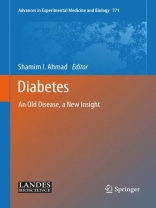Diabetes is a complex disease and is also one of the most common. It is very difficult to reach an accurate estimate for the global prevalence of diabetes since the standards and methods of data collection vary widely in different parts of the world. In addition, many potential sufferers are not included in the count because according to an estimate about 50% of cases remain undiagnosed for up to 10 years. However, according to an estimate for 2010, globally, there are about 285 million people (amounting to 6.4% of the adult population) suffering from this disease. This number is estimated to increase to 439 million by 2030 if no cure is found. The general increase in life expectancy, leading to an ageing population, and the global rise in obesity are two main reasons for the increase.
With the basic platform set, Editor presents his views and advice to the readers, especially to diabetic patients suffering from T2DM, on the basis of his observations and information collected from other diabetics.
Inhaltsverzeichnis
Prologue.- Introduction to Diabetes Mellitus.- Classification of Diabetes.- Fulminant Type 1 Diabetes Mellitus: A New Class of Type 1 Diabetes.- Gestational Diabetes Mellitus.- Global Prevalence and Future of Diabetes Mellitus.- Type 2 Diabetes Mellitus, Pandemic in 21st Century.- Emerging Type 2 Diabetes in Young Adults.- Impairment of Immune Systems in Diabetes.- Periodontal Disease and Diabetes.- Retinopathy in Diabetes.- Nephropathy in Diabetes.- Diabetic Foot: A Continuing Challenge.- Glycemic Variability in Type 2 Diabetes Mellitus: Oxidative Stress and Macrovascular Complications.- Diabetic Somatic Neuropathy.- Diabetic Autonomic Neuropathy.- Immunobiology of β‑Cell Destruction.- Cardiovascular Disease and Diabetes.- Pancreatic Cancer and Diabetes.- Molecular Mechanisms of Insulin Resistance in Diabetes.- Viral Infections and Diabetes.- Oxidative Stress in Diabetes.- The Pancreatic β Cells in Human Type 2 Diabetes.- β‑Cell Regeneration in Human Pancreas: The Lessons of Pancreatic Pathology.- Glucose‑Induced Insulin Secretion: Nutritional Prevention and Novel Avenues for Therapy.- Clinical Features, Diagnostic Criteria and Pathogenesis of Diabetes Mellitus.- Management and Treatment of Diabetes Mellitus.- Nutritional Supplements and their Effect on Glucose Control.- Herbal Medicines for the Management of Diabetes.- Continuous Subcutaneous Insulin Infusion (CSII) Pumps.-Pancreatic Transplant in Diabetes.- Weight Reduction in Diabetes.- Treatment of Obese Diabetics.- Neurocognitive Dysfunction in Old Diabetes: Management and Treatment.- Epilogue: An Appeal to the Heads of the Health Services and World Health Organization (WHO).Über den Autor
Shamim I. Ahmad, after obtaining his Master’s degree in Botany from Patna University, Bihar, India and his Ph D in Molecular Genetics from Leicester University, England, joined Nottingham Polytechnic as Grade 1 lecturer and was subsequently promoted to SL post. Ahmad served for about 37 years at Nottingham Trent University (formerly Nottingham Polytechnic) before taking an early retirement to spend his time writing books and conducting full‑ime research. For more than three decades he worked on different areas of biology including thymineless death in bacteria, genetic control of nucleotide catabolism, development of anti‑IDS drugs, control of microbial infection of burns, phages of thermophilic bacteria and microbial flora of Chernobyl after the nuclear accident. But his primary interest, which started 27 years ago, is DNA damage and repair, particularly near UV photolysis of biological compounds, production of reactive oxygen species and their implications on human health including skin cancer and xeroderma pigmentosum. He is also investigating photolysis of non‑biological compounds such as 8‑methoxypsoralen+UVA, mitomycin C, and nitrogen mustard and their importance in psoriasis treatment and in Fanconi anemia. In 2003 he received a prestigious “Asian Jewel Award” in Britain for “Excellence in Education”. He is the Editor of Molecular Mechanisms of Ataxia Telangiectasia and Molecular Mechanisms of Cockayne Syndrome, published byv Landes Bioscience. He also edited Molecular Mechanisms of Fanconi Anemia, Molecular Mechanisms of Xeroderma Pigmentosum, Diseases of DNA Repair and Neurodegenerative Diseases, published by Landes Bioscience and Springer Science+Business Media.
Sprache Englisch ● Format PDF ● Seiten 485 ● ISBN 9781461454410 ● Dateigröße 60.7 MB ● Herausgeber Shamim I. Ahmad ● Verlag Springer New York ● Ort NY ● Land US ● Erscheinungsjahr 2013 ● herunterladbar 24 Monate ● Währung EUR ● ID 2684611 ● Kopierschutz Soziales DRM












